
Roots
Consider for a moment the very strands that spring from the scalp, not as mere fibers, but as living testaments. Each curl, coil, and wave holds a resonance from antiquity, a whisper of generations who adorned and protected what grew from their crowns. In this understanding, the modern digital hearth, where kin gather across continents, shapes new pathways for textured hair. This gathering place, though born of silicon and light, becomes a vibrant extension of ancient practices of communal care and knowledge exchange.
It speaks to the deep, abiding connection between the physical expression of textured hair and the collective spirit of those who wear it. This virtual space, rich with shared wisdom, becomes a repository, a living archive for the reverence given to hair’s sacred place in heritage .
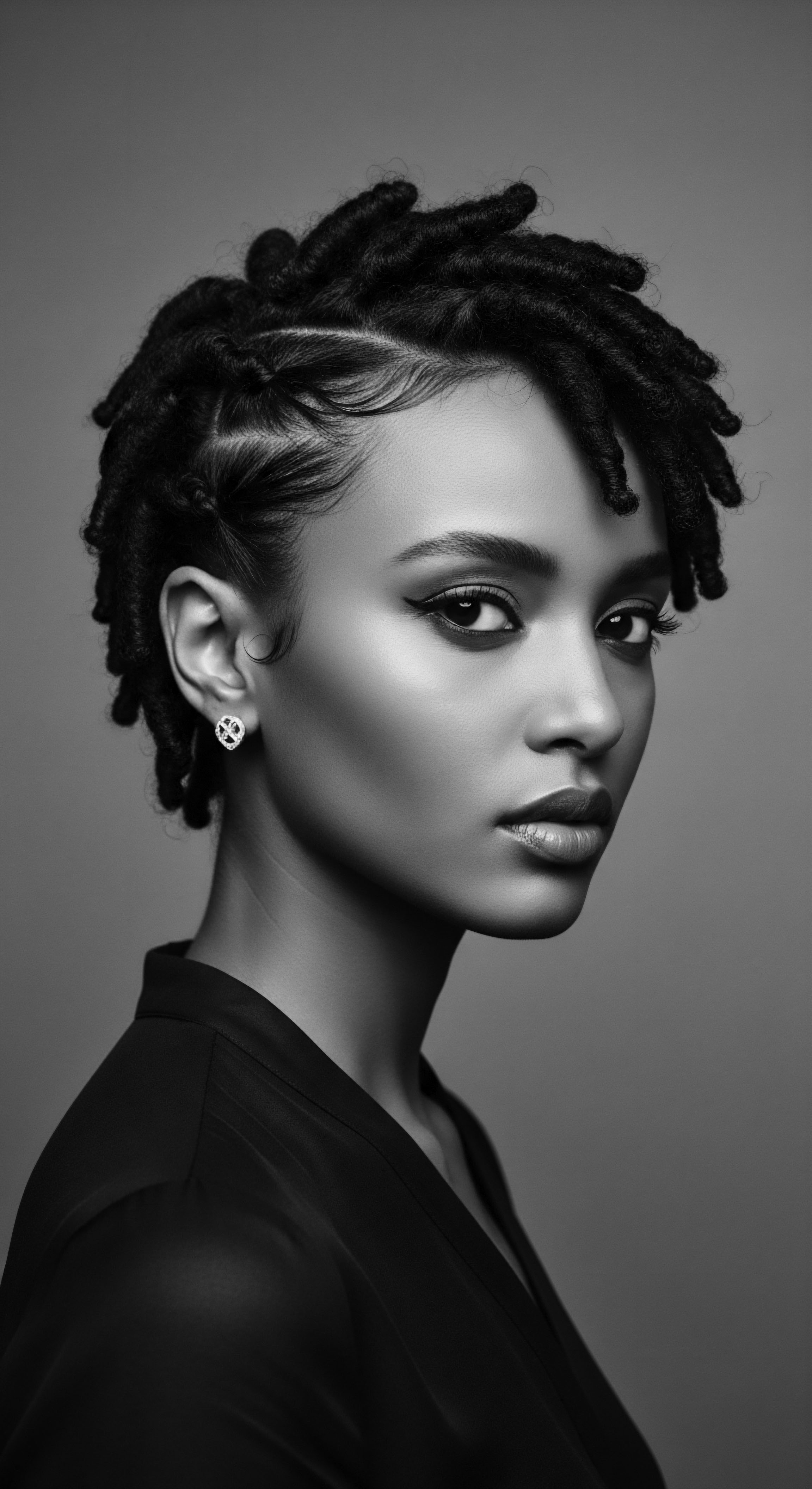
The Hair’s Ancient Blueprint
To truly grasp the support online communities extend, one must first recognize the intrinsic biological marvel of textured hair, viewed through an ancestral lens. The helical structure of a coiled strand, its unique elliptical cross-section, and the distinctive way keratin proteins align within its cortex are not random formations. These characteristics speak of evolutionary adaptations over millennia, responding to environments and climates where such structures offered protective advantages against sun and elements.
Hair, in its biological architecture, bears the indelible imprint of ancestral lands and survival. Early communities, observant of nature’s patterns, recognized this resilience and began to decipher its needs, developing early practices for care and adornment.
Within this inherent biology, classification systems have sought to categorize hair, from simpler designations to the more elaborate numerical and alphabetical grids of today. Yet, before any modern chart, ancestral communities held their own nuanced lexicon, often tied to kinship, spiritual beliefs, or social status. A particular coil pattern might have signified a specific tribal affiliation, a wave’s density linked to a family line, or a distinct curl shape denoting rites of passage within an African nation.
These were organic, lived classifications, passed down orally, woven into the very fabric of daily life. The language of hair, therefore, holds ancient roots, speaking to identity and belonging long before any contemporary chart emerged.
Online communities serve as digital extensions of ancestral gathering places, vital for transmitting textured hair knowledge.
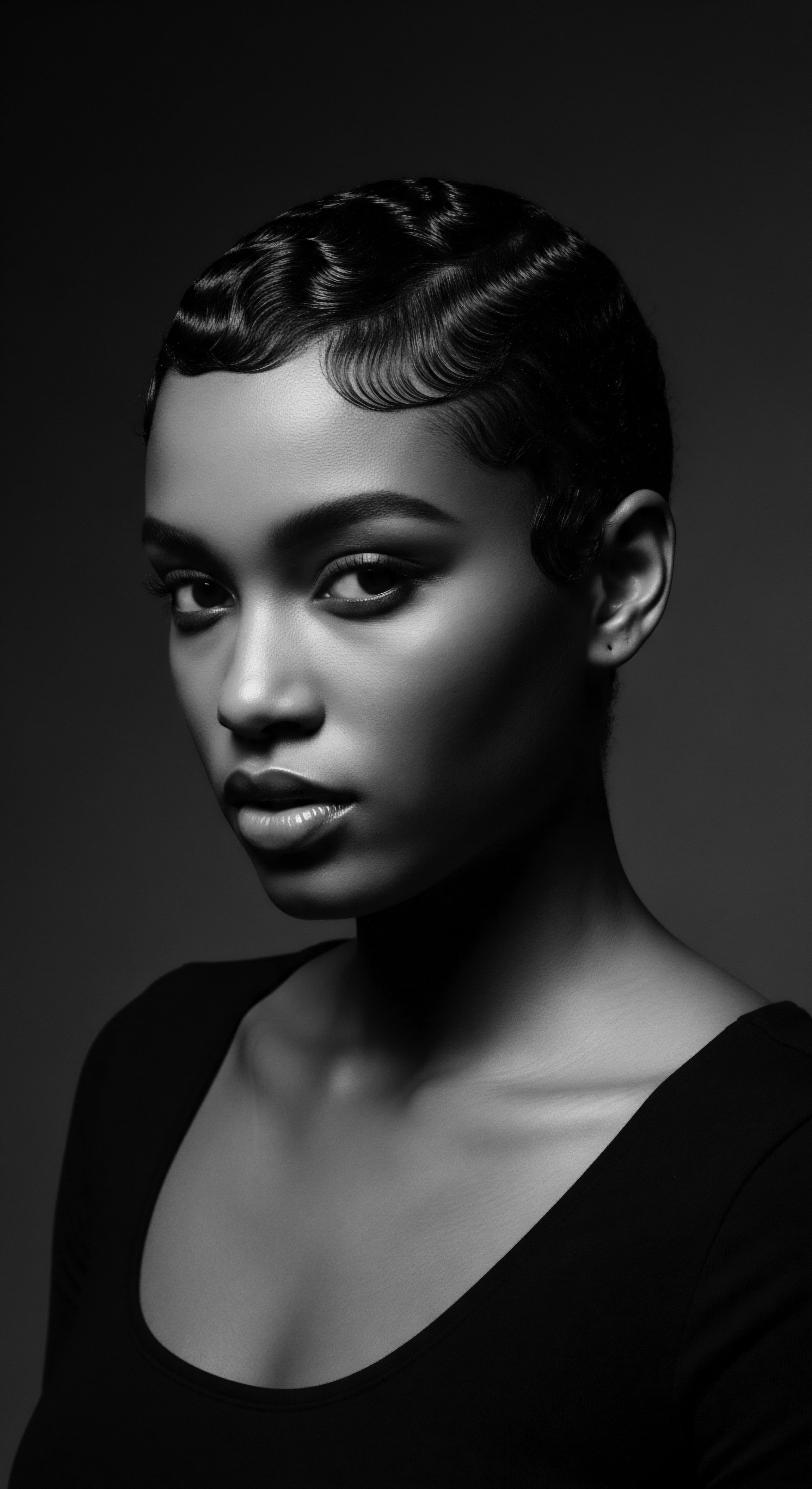
Anatomy’s Echoes from the Source
The science of hair, even in its most precise modern form, echoes practices and observations from generations past. The understanding of the hair follicle, nestled beneath the scalp, as the genesis point for each strand, finds parallel in traditional healing arts that honored the scalp as the very root of hair vitality. Ancestral practices like scalp oiling with indigenous botanicals were not mere cosmetic rituals; they often stemmed from an intuitive comprehension of scalp health influencing hair growth cycles. The hair shaft itself, composed primarily of keratin, was safeguarded through methods that recognized its delicate protein structure, even if the precise biochemical terms were unknown.
Consider the cuticle , the outermost protective layer of the hair. Its integrity was paramount in ancient care, protected by techniques like braiding or wrapping hair in cloths imbued with plant extracts. The cortex , which houses the melanin responsible for hair’s deep hues, and determines its curl pattern, was understood intuitively as the core of the strand’s strength and character.
Modern science, with its electron microscopes and protein analyses, merely provides a granular affirmation of truths long observed and applied. This scientific lens, when applied to heritage practices, reveals a continuity, a testament to ancestral ingenuity.
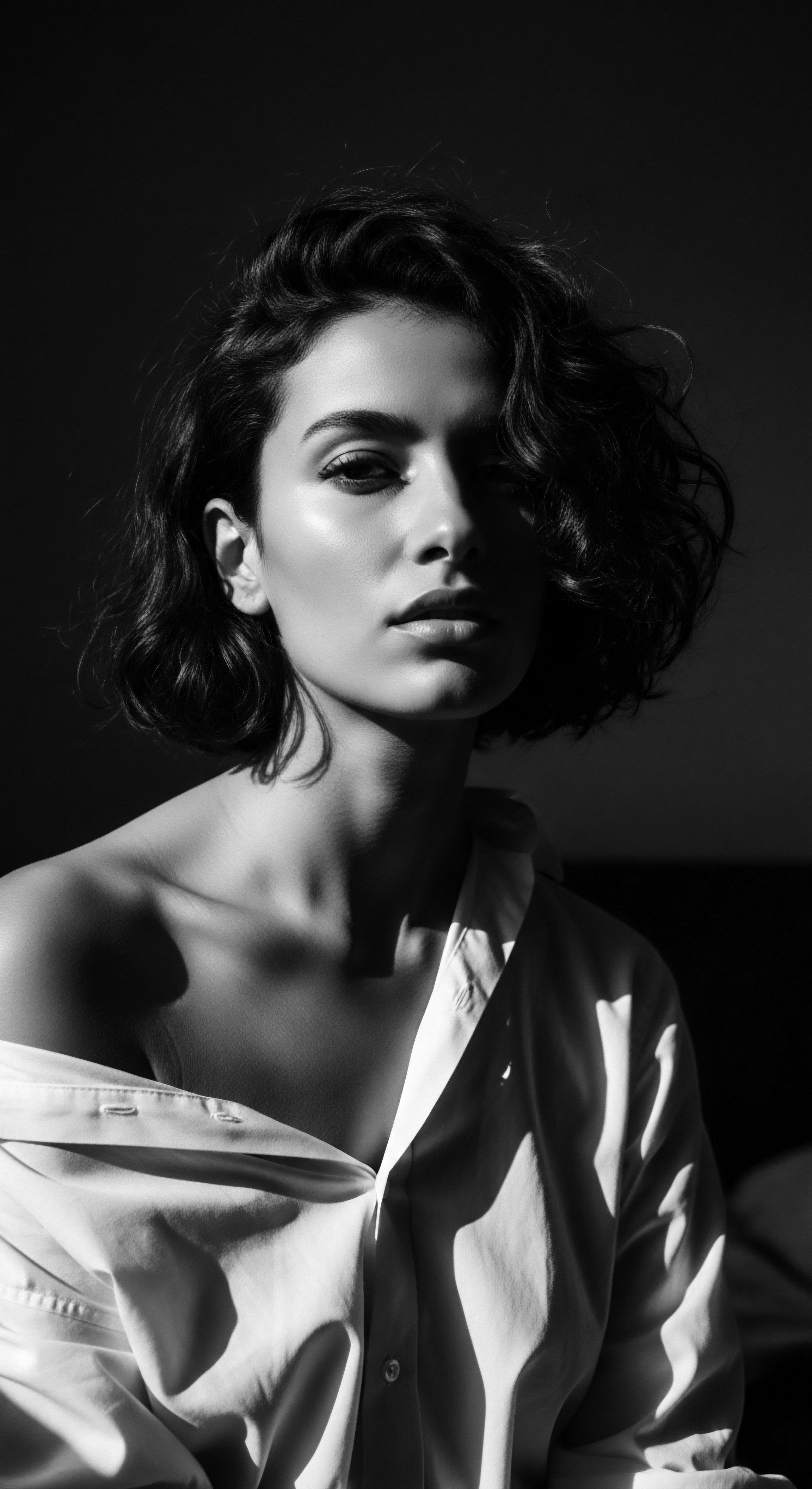
The Living Language of Textured Hair
The lexicon used to speak of textured hair often carries the weight of history, sometimes joyful, sometimes heavy with colonial impositions. Yet, within online communities, a reclamation occurs, a vibrant redefinition of terms. Traditional African terms, once sidelined, are finding new resonance alongside descriptive phrases that empower.
The language of online discussions actively shapes a collective understanding, allowing individuals to articulate their hair’s characteristics and needs with precision and pride. This collaborative naming and defining strengthens a communal bond, honoring the past while building a shared vocabulary for the present.
Online dialogues provide a forum for individuals to delve into the historical context of terms. For instance, the very word “kinky,” historically used disparagingly, is often re-examined within these communities, its resilience and strength affirmed. Members collectively disentangle the derogatory associations, opting instead for descriptions that celebrate the spring and vibrancy of their coils. This dynamic reframing, steeped in discussions of historical bias and cultural pride, allows for a more accurate and self-determined description of hair that honors its ancestral form .
| Historical Term/Practice Komé (Yoruba hair comb) |
| Contemporary Online Context Discussion of ergonomic tools for detangling, often referencing traditional designs. |
| Historical Term/Practice Hair Adornments (pre-colonial Africa) |
| Contemporary Online Context Inspiration for modern hair jewelry, beads, and wraps shared on digital platforms. |
| Historical Term/Practice "Bad Hair" (colonial imposition) |
| Contemporary Online Context Active rejection and redefinition of beauty standards, celebrating every texture. |
| Historical Term/Practice Oral transmission of care rituals |
| Contemporary Online Context Video tutorials and forum posts as new forms of knowledge transfer. |
| Historical Term/Practice The digital space bridges historical language with modern understanding, affirming ancestral wisdom. |
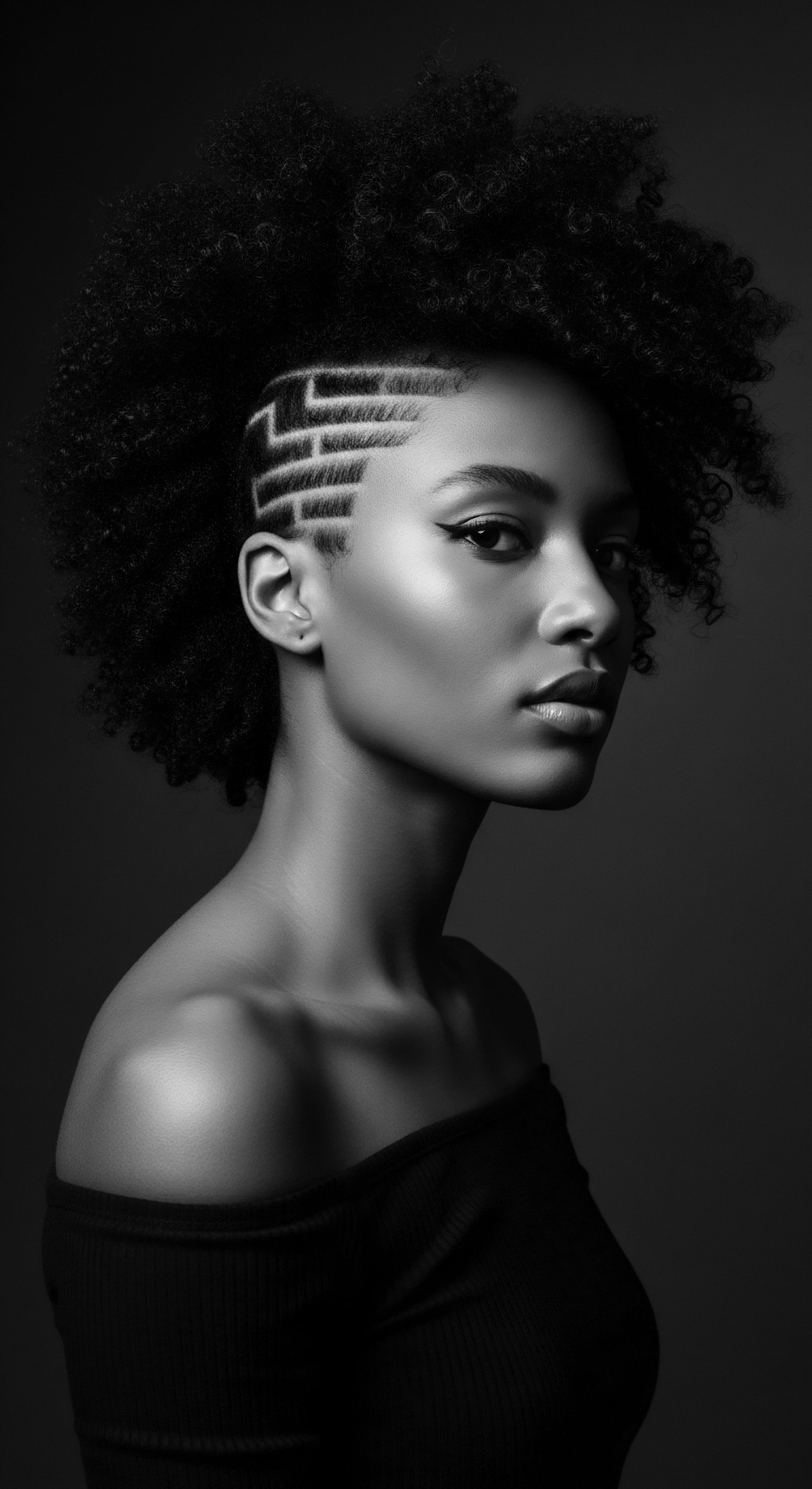
Ritual
Across generations, the styling of textured hair has always been a ritual, a deliberate act imbued with significance beyond mere aesthetics. From the intricate cornrows of ancient African kingdoms, which could depict social standing or spiritual beliefs, to the meticulously sculpted Afros of liberation movements, hair has functioned as a canvas for identity and resistance. Today, online communities act as digital custodians of these practices, offering a continuum of learning and reinvention.
These platforms preserve historical techniques, while also allowing for adaptive expressions that resonate with contemporary living. The digital space fosters an environment where the sacred acts of hair styling are passed on, refined, and celebrated, ensuring that the ancestral memory within each strand remains alive.

Protective Styling Lineage
The practice of protective styling holds a deep lineage, extending back to ancestral African communities where braiding and twisting served multiple purposes ❉ safeguarding delicate strands from environmental harshness, signifying social markers, and preserving hair between elaborate ceremonial adornments. Online communities have become crucial in demystifying these techniques, offering accessible tutorials and encouraging their widespread adoption. These digital spaces allow for a global exchange of knowledge, demonstrating how a singular style, such as Bantu knots , holds diverse regional variations and historical significances. One can observe, for instance, how the intricate partings in a traditional Senegalese style are discussed alongside their modern counterparts, revealing a continuity of design and purpose across centuries.
In a particular study, the impact of online platforms on the re-adoption of historically significant styles has been documented. Researchers noted that the “Black natural hair movement,” significantly amplified by platforms like YouTube and Instagram, led to a substantial re-emergence of traditional African haircare practices that were largely lost to African Americans during slavery (Yes Gurl, 2021). During that brutal period, practices such as braiding and coiling hair were often forbidden or made impossible. The contemporary digital resurgence of these methods allows a profound re-connection to a disrupted heritage , creating new channels for ancestral wisdom to flow.
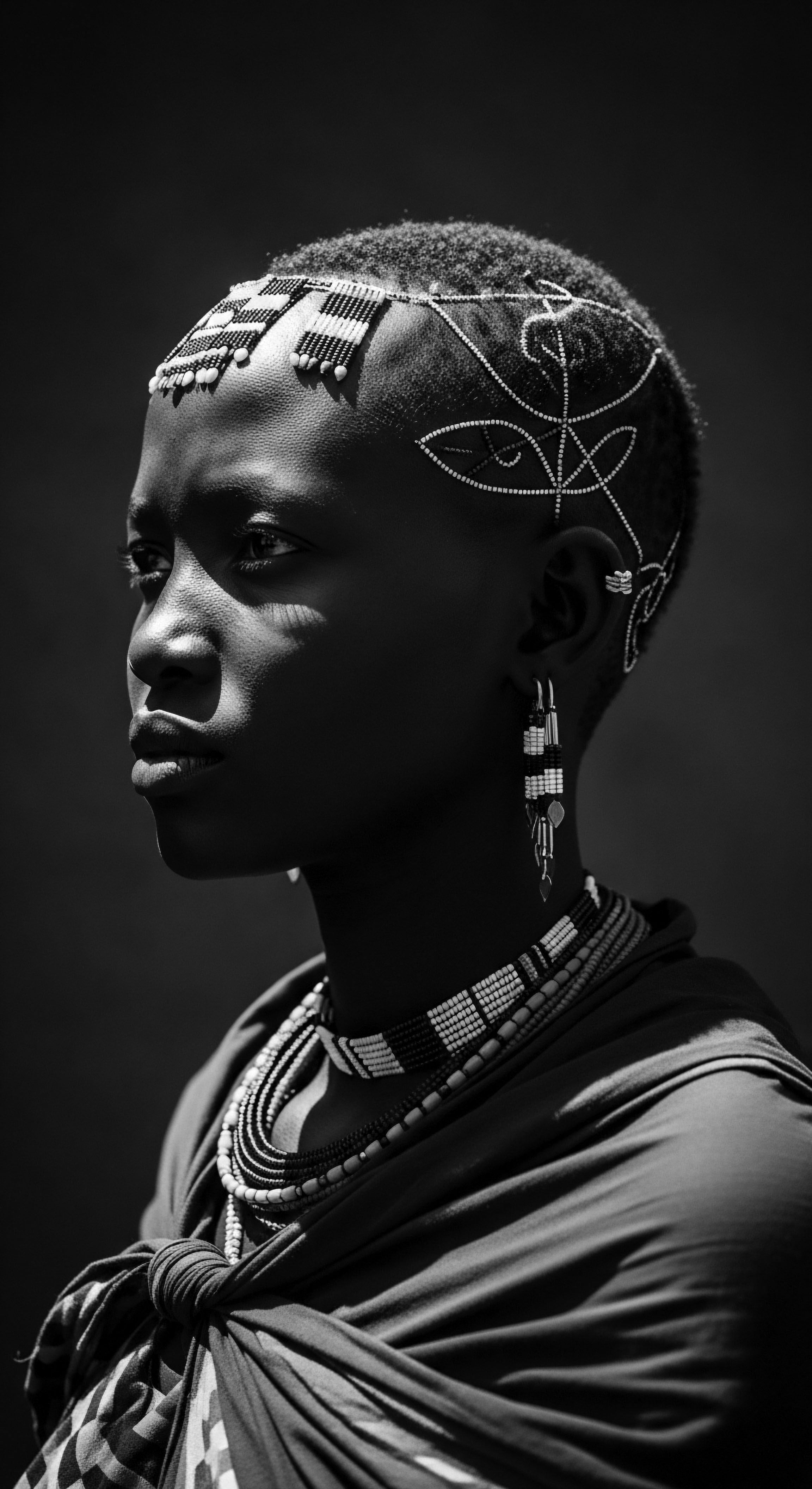
Defining Natural Patterns
Natural styling and pattern definition are deeply connected to a respect for hair’s inherent characteristics, a reverence passed down through generations. Ancient communities understood that working with the hair’s natural inclination preserved its integrity and enhanced its inherent beauty. Online spaces act as virtual salons, where individuals exchange techniques for accentuating coils, curls, and waves without resorting to harsh manipulations.
From finger coiling to various shingling methods, these techniques prioritize the health and vitality of the hair, echoing traditional approaches that honored the strand’s natural disposition. The collective knowledge available allows a personalized approach, deeply rooted in honoring the hair’s unique pattern.
The discussions often extend beyond mere technique, reaching into the philosophy of self-acceptance and the celebration of intrinsic beauty. Conversations about moisture retention, gentle detangling, and appropriate product application are not simply technical discussions; they carry the unspoken wisdom of generations who sought to nourish and protect their hair with natural elements. The very act of caring for one’s natural texture, affirmed and supported by a global online community, becomes a profound act of self-affirmation and ancestral honor .
Digital platforms re-establish disrupted ancestral hair practices, fostering cultural reclamation and self-acceptance.

The Tools of Care, Then and Now
The tools used for textured hair care hold their own story, reflecting both ingenuity and adaptation through history. From ancient combs carved from wood or bone, used for detangling and creating precise partings, to the natural elements like gourds for rinsing, and oils derived from native plants for conditioning, traditional tools were crafted with an intimate knowledge of hair’s needs. Online communities today bridge this historical understanding with modern innovations. Discussions revolve around wide-tooth combs that gently separate strands, satin-lined bonnets that protect delicate cuticles, and microfiber towels that reduce friction.
Here, the historical context of tools is often celebrated. For example, the precise parting achieved by traditional African combs, sometimes used for intricate stylistic maps on the scalp, finds modern parallels in discussions about sectioning clips and specialized combs for creating neat lines for braids or twists. The exchange of information about modern ergonomic designs is intertwined with the recognition of the ancestral wisdom embedded in their predecessors. This collective appraisal of tools, both old and new, underscores a continuous pursuit of optimal care, drawing from a rich, shared past.
- Wooden Combs ❉ Used ancestrally for detangling and precise parting, often made from local woods.
- Satin and Silk Wraps ❉ Historical use of natural fibers to protect hair, now widely promoted for nighttime care.
- Natural Plant-Based Oils ❉ Utilized for centuries for conditioning and scalp health, now discussed alongside scientific benefits.
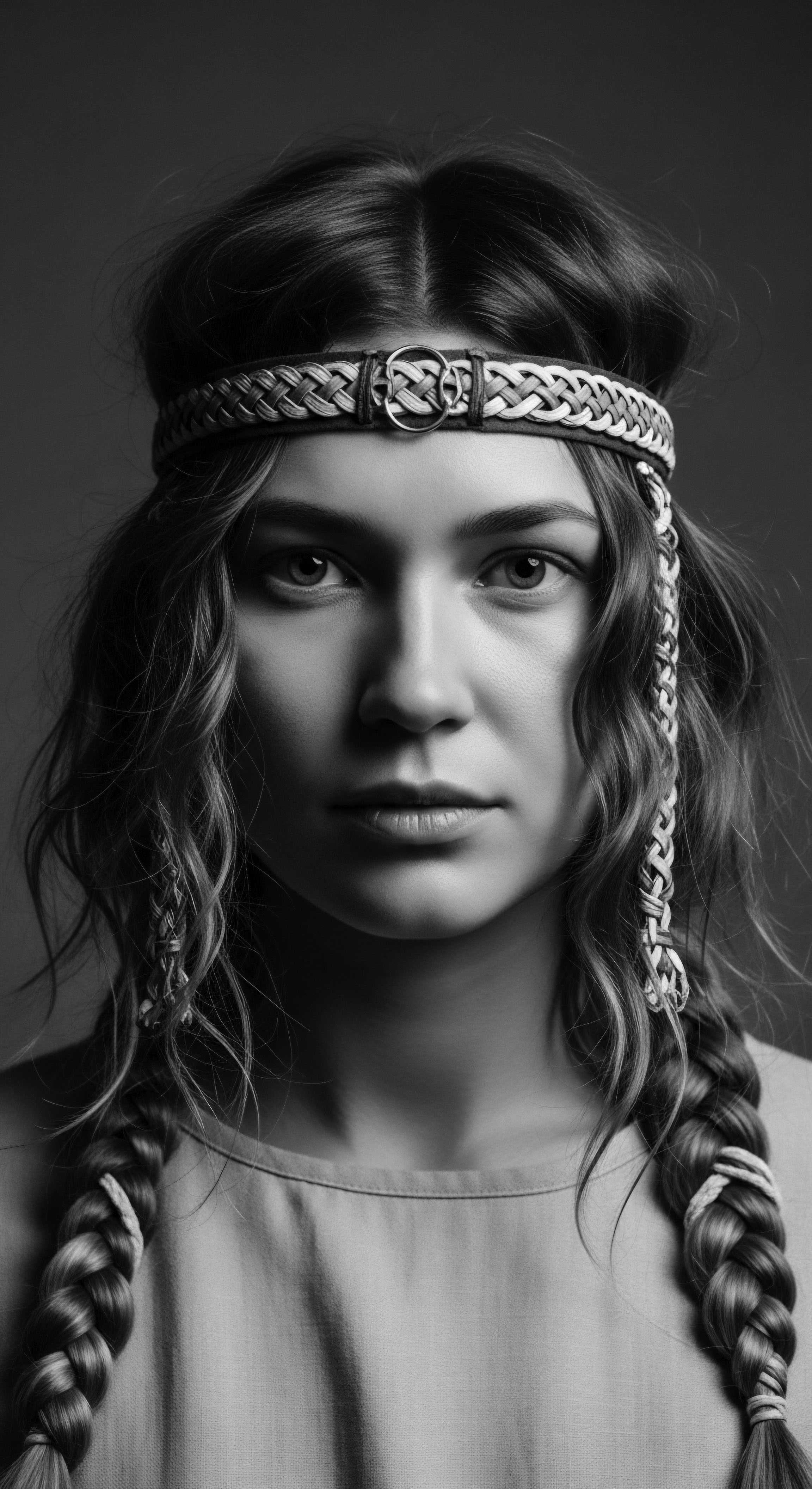
Relay
The regimen of textured hair care, a symphony of cleansing, conditioning, and protecting, represents a relay race through time. Each generation passes the baton of wisdom, adapting and enriching practices. Online communities have become indispensable conduits in this relay, ensuring that insights gleaned from ancestral practices meet the rigor of modern understanding, all to sustain vibrantly textured strands. The transmission of knowledge within these digital spaces reflects a commitment to holistic wellbeing, where the meticulous attention to hair is seen as an extension of care for the entire self, deeply rooted in ancestral philosophies of interconnectedness .

Building a Personalized Regimen
The creation of a personalized textured hair regimen is not a recent invention. Ancestral communities tailored their care routines to their specific environments, available resources, and unique hair characteristics. They understood the nuances of their local botanicals, the properties of different waters, and the effects of climate on their hair. Online communities mirror this adaptive approach, yet on a global scale.
Individuals share methods, product experiences, and troubleshooting tips, allowing for the construction of regimens that honor individual hair needs while drawing from a vast, collective pool of experiences. These discussions often highlight the interplay between climate, diet, and hair health, echoing the holistic perspectives of past generations.
For instance, a person in a humid climate might seek guidance on humidity-resistant styling, while another in an arid region might prioritize deep conditioning treatments. The online dialogue facilitates this exchange, creating a dynamic archive of solutions tailored to diverse conditions. This iterative process of sharing and learning ensures that the wisdom of care remains alive, continuously refined by the contributions of many. This digital collaboration offers a remarkable parallel to the historical practice of communal knowledge sharing, where village elders or experienced community members offered guidance on hair rituals and herbal remedies.
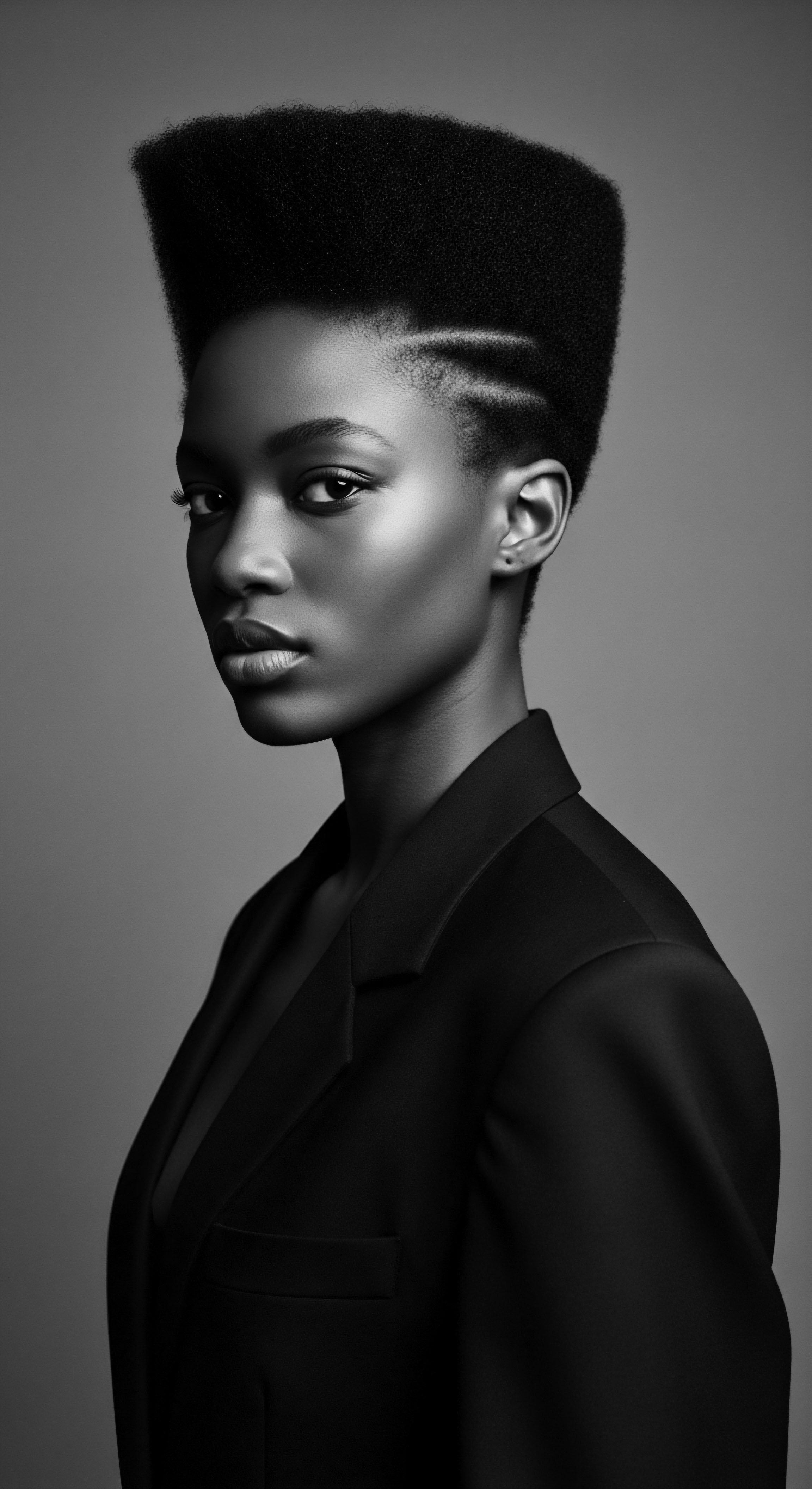
The Nighttime Sanctuary and Ancestral Protection
The nighttime care of textured hair holds particular significance, serving as a sanctuary against friction and moisture loss. The ritual of wrapping hair or covering it with protective fabrics has a long and storied past, with roots in various African traditions where head coverings were used for preservation and adornment. Today, online communities champion the use of satin and silk bonnets, scarves, and pillowcases, not as mere trends, but as essential tools for maintaining hair health. This shared emphasis on nighttime protection directly links to historical practices that sought to safeguard hair’s integrity during rest.
Discussions within these communities often extend to the optimal materials and styles for nighttime preservation, comparing various fabrics and demonstrating techniques for securing hair to minimize tangling and frizz. This collective wisdom ensures that the practices of preservation continue, adapted for modern fabrics and readily available to a global audience. It affirms a deep understanding that hair, even while resting, requires deliberate care to maintain its vibrancy.
- Satin Bonnets ❉ Modern iteration of traditional headwraps, designed to reduce friction and retain moisture, preserving delicate curl patterns.
- Pineappling ❉ A contemporary technique of gathering hair on top of the head for protection, reminiscent of historical ways to keep hair out of the way during sleep or strenuous activity.
- Silk Pillowcases ❉ An alternative to bonnets, extending the protective benefits of smooth fabrics to minimize hair breakage overnight.
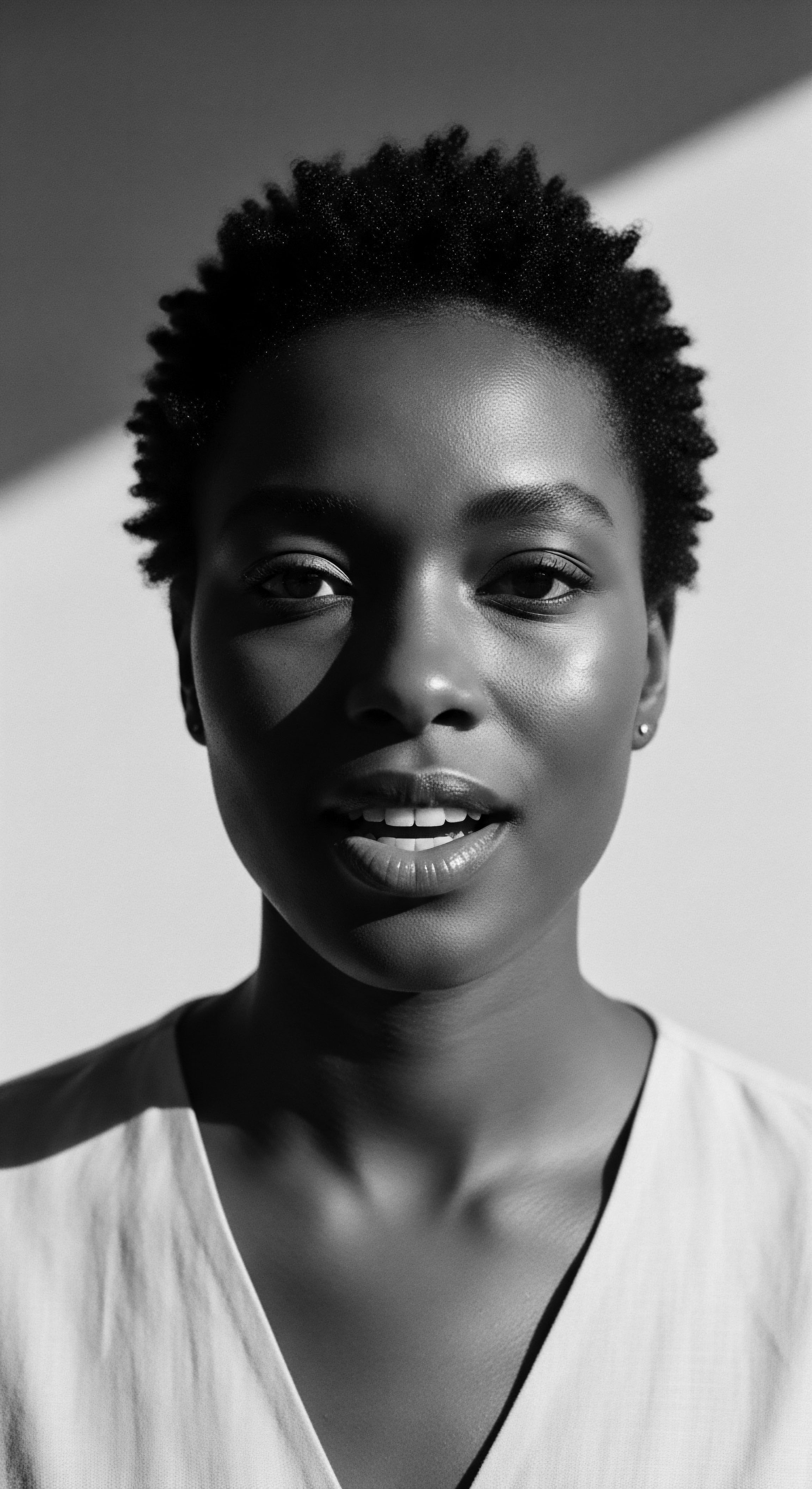
The Ingredient Wisdom of the Ages
The ingredients favored for textured hair care carry ancestral wisdom, a testament to generations who understood the restorative and fortifying properties of natural elements. From shea butter, a staple across West Africa for centuries, revered for its emollient properties, to rhassoul clay, a Moroccan secret for gentle cleansing, these ingredients speak of specific geographies and ancient practices. Online communities have become invaluable in disseminating knowledge about these traditional ingredients, often providing scientific explanations for their efficacy, thus bridging ancient wisdom with contemporary understanding.
For instance, online discussions frequently highlight the molecular structure of particular oils, explaining how their fatty acid profiles align with the needs of coiled strands for moisture and elasticity. The historical application of these ingredients, often as part of elaborate hair rituals passed down through familial lines, finds a new life in digital tutorials and product recommendations. This collective research and sharing of ingredient knowledge ensure that the efficacy of ancestral remedies is understood and applied by new generations, sustaining a continuum of heritage-informed care .
A significant study by Byrd and Tharps (2014) highlights how historically, hair served as a deep symbol of identity and cultural continuity across African societies. This understanding underpins the contemporary online discussions about traditional ingredients. The renewed appreciation for elements like baobab oil or chebe powder , once localized traditional remedies, is amplified by online sharing, allowing their benefits to reach a global audience. This movement transcends mere product use; it signifies a conscious re-connection to botanical knowledge and care philosophies that were foundational to ancestral hair practices.
Holistic hair care in online spaces is a modern iteration of ancestral wisdom, connecting scalp health, ingredients, and protective practices.
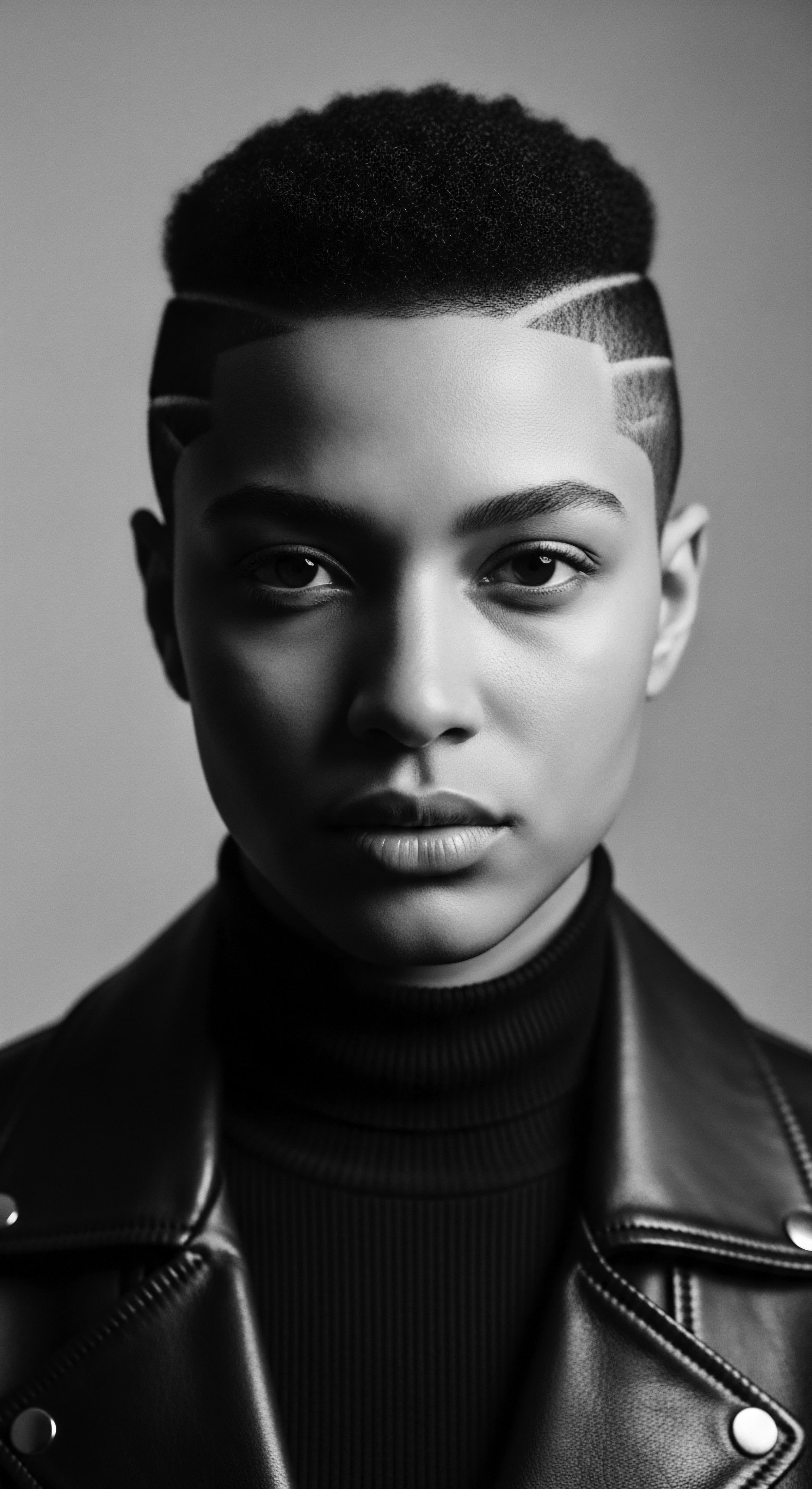
Addressing Hair Challenges with Collective Wisdom
Textured hair presents unique challenges, from managing dryness to minimizing breakage, concerns that have existed across time. Ancestral communities developed sophisticated methods for addressing these issues, often relying on observation, natural remedies, and communal support. Today, online communities serve as comprehensive compendiums for problem-solving, offering a vast array of solutions rooted in shared experiences and collective experimentation. From discussions on protein sensitivity to debates about deep conditioning frequencies, the online forum acts as a peer-to-peer consultation space.
The communal sharing of insights within these digital spaces often validates individual experiences, offering comfort and practical steps. When an individual struggles with a particular issue, such as consistent dryness, the community responds with a chorus of potential solutions, drawing from both anecdotal success stories and scientifically backed information. This collaborative approach to problem-solving mirrors the historical reliance on community elders or trusted practitioners, who shared their accumulated wisdom to guide others through hair challenges. The online environment thus acts as a dynamic, continuously updated resource, ensuring that no individual faces their hair journey in isolation.
| Traditional Challenge/Solution Environmental damage (sun, dust) |
| Online Community Response Discussions on UV protection for hair, styling for climate adaptation. |
| Traditional Challenge/Solution Dryness and brittleness |
| Online Community Response Deep conditioner recipes, L.O.C. method guides (Liquid, Oil, Cream). |
| Traditional Challenge/Solution Scalp irritation/dandruff |
| Online Community Response Sharing of natural scalp treatments (e.g. apple cider vinegar rinses) and product reviews for soothing ingredients. |
| Traditional Challenge/Solution Breakage from manipulation |
| Online Community Response Tutorials on gentle detangling, low-manipulation styles, protective styling options. |
| Traditional Challenge/Solution Online communities provide a modernized, accessible platform for ancestral problem-solving techniques, rooted in collective wisdom. |

Reflection
The textured hair strands, each a testament to resilience and beauty, carry the profound echoes of their past. Online communities, in their dynamic interplay, have become the modern conduits for these echoes, sustaining a living dialogue between ancestry and aspiration. They are not simply platforms for sharing tips; they are digital kinships, spaces where the soul of a strand is recognized, honored, and collectively cared for. This vibrant interchange ensures that the legacy of textured hair, its historical significance, and its intrinsic beauty, are not only remembered but continually lived, allowing a deep, personal connection to a vast, shared heritage .
The virtual village supports a continuous unfolding of knowledge and identity. It fosters a collective re-engagement with ancestral practices, transforming what might have been lost into openly accessible wisdom. The textured hair journey, once perhaps a solitary path, now unfolds within a supportive global embrace, allowing each individual to trace their own connection back to the source, to the very beginning of their hair’s story.

References
- Byrd, Ayana, and Lori Tharps. Hair Story ❉ Untangling the Roots of Black Hair in America. St. Martin’s Press, 2014.
- Gill, Amy. “Black women by using SNS can access online communities that provide an invaluable source of information regarding their natural-hair concerns.” (Source cited in multiple academic works related to online natural hair movement, particularly in Gill, 2015 works and others).
- Raj, Meenakshi. Online Support Groups are Just as Clever and Successful as Real Communities. 2015.
- Brown, Kathy J. and Lynnette M. Gilbert. “Black Hair as Metaphor Explored through Duoethnography and Arts-Based Research.” 2021.
- CROWN Research Study. 2023.
- Yes Gurl. “The black natural hair movement ❉ How it thrived on social media.” 2021.
- Ellington, Kisha. “Social networking sites ❉ A support system for African-American women wearing natural hair.” 2015.
- Antoine, Melissa D. “Social Media Communities on YouTube and the Promotion of Natural Hair Acceptance Among Black, Female College Students.” 2013.
- Luter, Jeanette. “The Natural Hair Movement ❉ An Examination of the Nexus Between Race, Gender, and Online Community Building.” 2014.
